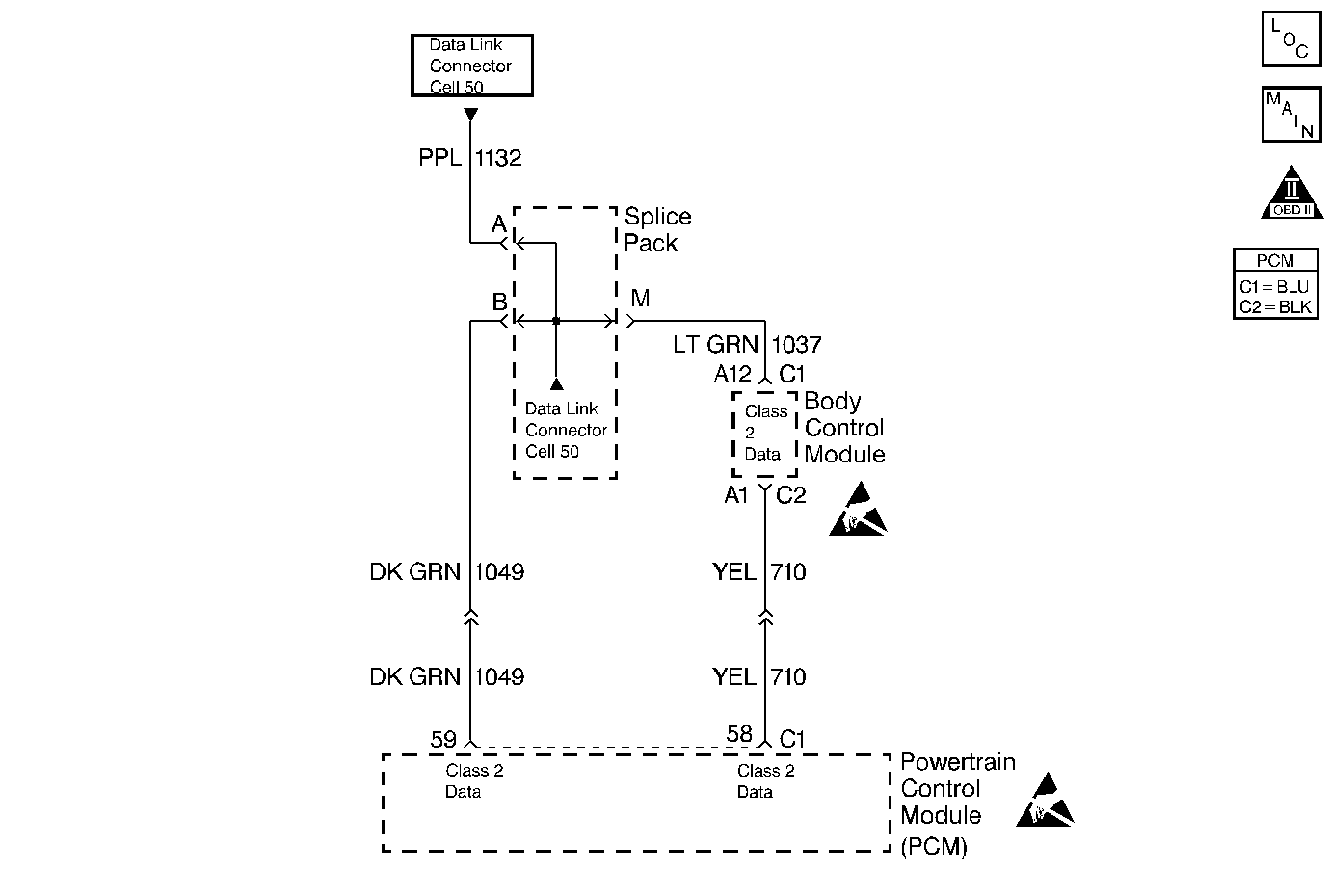
Circuit Description
A Class Il serial data communications system is used on this vehicle in order to allow various modules to communicate and share information with each other. Each bit of information has one of two lengths: long or short. This allows for the reduction of the vehicle wiring, and for the transmission and reception of multiple signals over a single wire. The messages carried on the Class II serial data stream are also prioritized. If two messages attempt to establish communications on the data line at the same time, the message with the higher priority will continue. The message with the lower priority message will wait.
All modules on the Class II serial data line send out a periodic identifier message. The PCM is listening for the identifier messages from the EBCM and the Body Control Module (BCM) as well as an echo of the PCM identifier message. If a module cannot respond to the PCM, a DTC is stored.
Conditions for Setting the DTC
The PCM has lost communication with the Body Control Module (BCM) after the PCM received a Theft Passed message from the BCM.
Action Taken When the DTC Sets
| • | The PCM will record operating conditions at the time the diagnostic fails. This information will store in the Freeze Frame and Failure Records buffers. |
| • | A history DTC stores. |
Conditions for Clearing the MIL/DTC
| • | A history DTC will clear after 40 consecutive warm up cycles without a fault. |
| • | A scan tool can clear the DTCs. |
Diagnostic Aids
Attempting to start the vehicle by bypassing the Passlock ll system or by substituting parts without performing the password learn procedure may set a DTC P1631 and a P1632.
If no password is received, a DTC U1064 and P1632 may be set.
An intermittent may be caused by any of the following conditions:
| • | A poor connection |
| • | Rubbed through wire insulation |
| • | A broken wire inside the insulation |
Thoroughly check any circuitry that is suspected of causing the intermittent complaint. Refer to Intermittents and Poor Connections Diagnosis in Wiring Systems.
If a repair is necessary, refer to Wiring Repairs or Connector Repairs in Wiring Systems.
Test Description
The numbers below refer to the step numbers on the Diagnostic Table.
-
The Powertrain OBD System Check prompts you to complete some of the basic checks and to store the Freeze Frame and Failure Records data on the scan tool if applicable. This creates an electronic copy of the data captured when the fault occurred. The scan tool stores this data for later reference.
-
A scan tool that cannot display the PCM data indicates that a short exists on the serial data circuit.
-
Because of the internal link of the serial data circuits within the PCM, it is necessary to disconnect the PCM electrical connector in order to determine which serial data circuit or the module that the short is in.
-
Program the replacement PCM and perform the Crankshaft Position System Variation Learn Procedure. Refer to the latest Techline procedures for PCM programming.
-
If the serial data circuit to the Body Control Module (BCM) was not open, this indicates that the serial communication loss to the PCM lies within the BCM. Refer to Body Control Module portion of the service manual for Passlock diagnosis.
-
If the serial data loss occurred after a good theft password has been received, the PCM will allow the vehicle to start on following attempts. After making the necessary repairs to the vehicle, program the replacement PCM and complete the password learn procedure and the crankshaft position system variation learning procedures in order to allow the theft system to operate properly.
-
If no malfunctions are present at this point and no additional DTCs were set, refer to Diagnostic Aids for additional checks and information.
Step | Action | Value(s) | Yes | No |
|---|---|---|---|---|
1 | Did you perform the Powertrain On-Board Diagnostic (OBD) System Check? | -- | ||
Install a scan tool. Was DTC U1064 also set? | -- | |||
3 | Has any part of the vehicle theft deterrent system been tampered with? | -- | ||
Is the action complete? | -- | -- | ||
5 | Does the BCM indicate that the password is valid? | -- | ||
|
Important:: The replacement PCM must be programmed. Refer to Powertrain Control Module Replacement/Programming . Replace the PCM. Is the action complete? | -- | -- | ||
7 | Check for BCM DTCs and make any necessary repairs. Is the action complete? | -- | ||
Does the scan tool indicate that this diagnostic ran and passed? | -- | |||
Check to see if any additional DTCs are set. Does the scan tool display any DTCs that you have not diagnosed? | -- | Go to the applicable DTC table | System OK Go to Diagnostic Aids |
